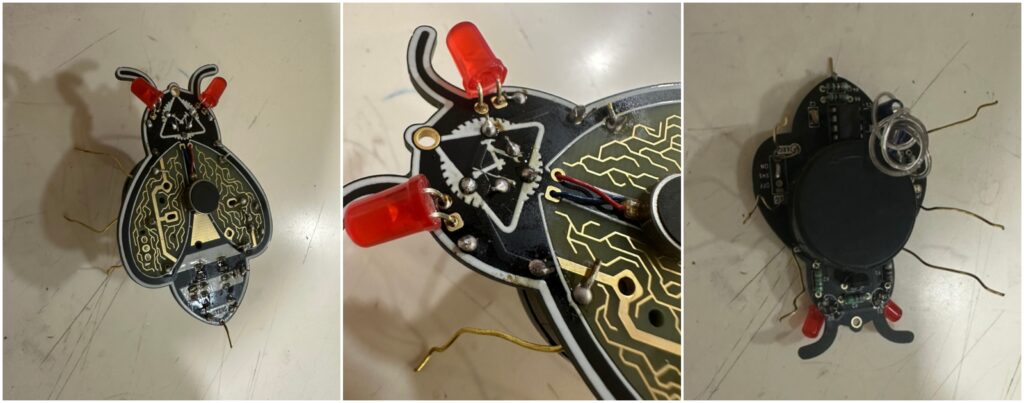Hello everyone, hope you are doing well. Welcome to my blog. Today I’ll be talking about a recent project of mine, completed through makers asylum, the “Walking bee.”
This project consisted of soldering components such as resistors, capacitors, buzzers, and LEDs on a PCB shaped like a bee. The goal of the component was quite simple. All it needed to do was complete a circuit that would then light up 2 LEDs that act like the bees eyes and power a motor attached to the belly of the bee, which would vibrate to make the bee move forward. In order to achieve this, I soldiered on the resistors of appropriate values to regulate the current and voltage in the circut, and soldered on metal wires as ‘legs’ of the bee, helping it stay off the ground.
The end product looked like this-

From my experience, here are a few tricks and tips to keep in mind when you first start to solder-
- NEVER TOUCH THE METAL PART OF THE SOLDERING IRON- I am speaking from experience unfortunately. You should never touch any part of the soldering iron which is metal, as it reaches temperatures upto 300-400 degrees celsius. Your fingers should always hold the soldering iron by the rubber part, and be careful of where you place the iron when you are not using it, as it will be hot enough to start a fire. I recommend you use a stand to prop the soldering iron in the air when not in use.
- Wash your hands throughly before and after soldering. This is because the solder wire contains lead & other metals. Lead is a known neurotoxin and can pose significant chronic health effects, such as reproductive problems, digestive problems, and memory and concentration problems. Hand contact or surfaces contaminated with lead solder pose an ingestion hazard.
- Wear a mask and open a window. Conduct your work in a well ventilated area. Use a ventilation system or a fan to keep the fumes away from your face. Lead oxide fumes can be given off during soldering. Soldering can also release other metal hazardous fumes (e.g. cadmium, zinc, arsenic, and chromium).
- Keep a wet spong near you. This will allow you to clean your soldering iron before each solder. Make sure to keep the sponge damp at all times to avoid it burning.
Most importantly, remember to have fun with it. It is very rewarding to see your creation actually fucntion, especially when there is a certain level of difficulty in making it. I will see you all in the next post, bye for now.
